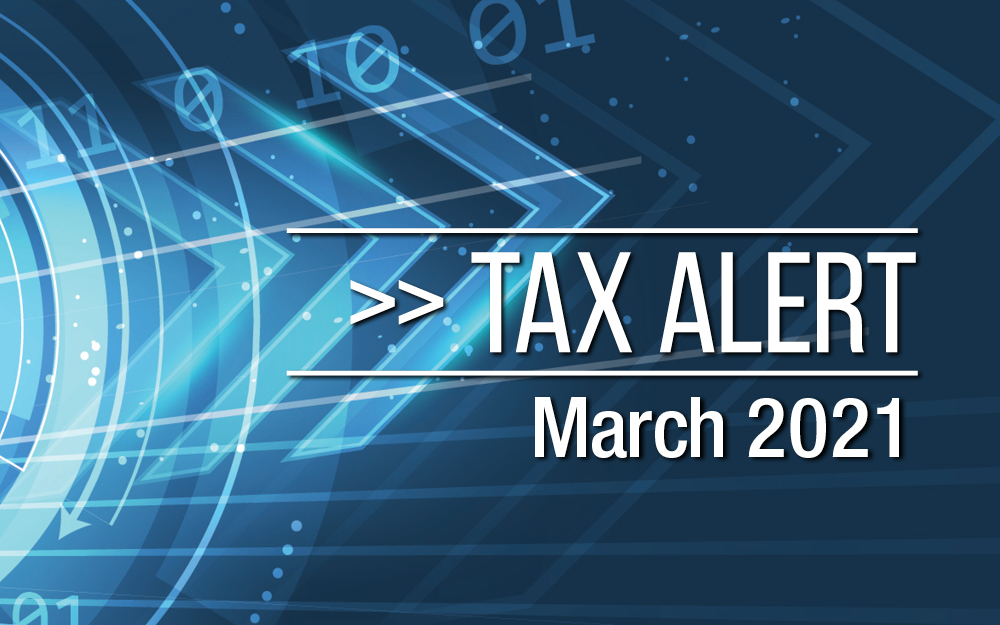
Autumn 2021
After an eventful summer of weather extremes, on-again off-again lockdowns and the swearing in of a new US President, many will be hoping that Autumn ushers in a change of more than the season. As the vaccine rollout begins, there are also promising signs that economic recovery may be earlier than expected.
Australia’s economy has improved and the downturn was not as deep as feared. That was the message Reserve Bank Governor Philip Lowe delivered to Parliament on February 5, citing strong employment growth, retail spending and housing. Unemployment fell from 6.6% to 6.4% in January, although annual wage growth remains steady at a record low of 1.4% after a 0.6% increase in the December quarter. Retail trade rose 0.6% in January, 10.7% higher than a year ago. While home lending jumped 8.6% in December. This helped fuel the 3% rise in national home values in the year to January, led by a 7.9% increase in in regional prices.
Business and consumer sentiment is also improving. The NAB Business Confidence Index was up from 4.7 points to 10.0 points in January, although 60% of businesses say they are not interested in borrowing to invest. Halfway through the corporate reporting season, 87% of ASX200 companies reported a profit in the December half year, although earnings were 14% lower in aggregate while dividends were 4% higher. The ANZ-Roy Morgan Consumer Confidence rating eased slightly in February but is still up 67% since last March’s low. Higher commodity prices lifted the Aussie dollar to a three-year high. It closed the month around US78.7c, on the back of a 31% rise in crude oil prices and an 8.5% lift in iron ore prices in 2021 to date.

There’s more than one way to boost your retirement income
After spending their working life building retirement savings, many retirees are often reluctant to eat into their “nest egg” too quickly. This is understandable, given that we are living longer than previous generations and may need to pay for aged care and health costs later in life.
But this cautious approach also means many retirees are living more frugally than they need to. This was one of the key messages from the Government’s recent Retirement Income Review, which found most people die with the bulk of the wealth they had at retirement intact.i
One of the benefits of advice is that we can help you plan your retirement income so you know how much you can afford to spend today, secure in the knowledge that your future needs are covered.
Minimum super pension withdrawals
Under superannuation legislation, once you retire and transfer your super into a pension account, you must withdraw a minimum amount each year. This amount increases from 4 per cent of your account balance for retirees aged under 65 to 14 per cent for those aged 95 and over. (These rates have been halved temporarily for the 2020 and 2021 financial years due to COVID-19.)
One of the common misconceptions about our retirement system, according to the Retirement Income Review, is that these minimum drawdowns are what the Government recommends. Instead, they are there to ensure retirees use their super to fund their retirement, rather than as a store of tax-advantaged wealth to pass down the generations.
In practice, super is unlikely to be your only source of retirement income.
The three pillars
Most retirees live on a combination of Age Pension topped up with income from super and other investments – the so-called three pillars of our retirement system. Yet despite compulsory super being around for almost 30 years, over 70 per cent of people aged 66 and over still receive a full or part-Age Pension.
While the Retirement Income Review found most of today’s retirees have adequate retirement income, it argued they could do better. Not by saving more, but by using what they have more efficiently.
Withdrawing more of your super nest egg is one way of improving retirement outcomes, but for those who could still do with extra income the answer could lie in your nest.
Unlocking housing wealth
Australian retirees are some of the wealthiest in the world, with median household wealth of around $1.4 million. Yet close to $1 million of this wealth is tied up in the family home.
That’s a lot of money to leave to the kids, especially when many retirees end up living in homes that are too large while they struggle to afford the retirement lifestyle they had hoped for.
For these reasons there is growing interest in ways that allow retirees to tap into their home equity. Of course, not everyone will want or need to take advantage of these options. But if you are looking for ways to use your home to generate retirement income, but don’t relish the thought of welcoming Airbnb guests, here are some options:
- Downsizer contributions to your super. If you are aged 65 or older and sell your home, perhaps to buy something smaller, you may be able to put up to $300,000 of the proceeds into super (up to $600,000 for couples).
- The Pension Loans Scheme (PLS). Offered by the government via Centrelink, the PLS allows older Australians to receive tax-free fortnightly income by taking out a loan against the equity in their home. The loan plus interest (currently 4.5 per cent per year) is repaid when you sell or after your death.
- Reverse Mortgages (also called equity release or home equity schemes). Similar to the PLS but offered by commercial providers. Unlike the PLS, drawdowns can be taken as a lump sum, income stream or line of credit but this flexibility comes at the cost of higher interest rates.
The big picture
While super is important, for most people it’s not the only source of retirement income.
If you would like to discuss your retirement income needs and how to make the most of your assets, give us a call.
i Retirement Income Review, https://treasury.gov.au/sites/default/files/2020-11/p2020-100554-complete-report.pdf

Tax Alert March 2021
Individuals and small business owners who have taken advantage of the government’s COVID-19 support programs will find themselves increasingly under the tax man’s microscope in coming months. This is just one of the key developments occurring in the world of tax at the moment.
Data matching program expanded
The Tax Commissioner has applied for additional data from Services Australia to allow the ATO to verify the eligibility of applicants for the government’s key COVID-19 support schemes.
The ATO will begin matching the data against eligibility criteria for the JobKeeper, temporary early access to superannuation, Temporary Cash Flow Boost and JobMaker Hiring Credit schemes.
Objectives of the program include “verification of applications and identify compliance issues”, identifying individuals and businesses “failing to meet their registration and/or lodgment obligations”, and ensuring all tax and super reporting obligations have been met.
Expenses shortcut extended again
Employees using the shortcut method to calculate their working from home expenses can continue using this method after the ATO extended the deadline for the scheme to 30 June 2021.
The ATO has updated its guidance to enable employees and business owners working from home between 1 March 2020 and 30 June 2021 to claim a flat 80 cents per work hour for running expenses during this period.
Clock runs down on STP exemption
The ATO has reminded small employers (with 19 or less staff) exemptions from the single touch payroll (STP) system end on 30 June 2021.
From 1 July 2021, employers who are currently exempt from reporting closely held payees will need to report them through STP. (Closely held payees include family members, directors or shareholders of the business and beneficiaries of a trust). They will, however, have the option to report the information on a quarterly basis.
Super choice expanded for employees
On 1 January 2021, the rules relating to choice of super fund changed and the ATO is warning employers they must comply.
Any new workplace determination or enterprise agreement made on or after 1 January 2021 must now offer employees the right to choose the super fund into which their employer pays their compulsory Super Guarantee (SG) contributions. This applies to both existing and new hires.
Once an employee has nominated a fund using the ATO’s Standard Choice Form, the employer must pay their SG contributions into that fund. Employers who fail to comply risk being audited and penalised by the ATO.
JobMaker Hiring Credit
Businesses considering hiring new employees aged 35 and under may be eligible for a government payment through the new JobMaker Hiring Credit scheme.
Employers will receive payments of up to $200 a week for each eligible employee aged 16 to 29, or $100 a week for an employee aged 30 to 35. Eligibility criteria include holding an ABN, being registered for PAYG withholding tax, reporting through STP, and being current with your income tax and GST lodgment obligations.
Businesses can register for JobMaker on the ATO website at any time until the program closes.
Business concessions start
Small to medium-sized businesses with an annual turnover of $10 to $50 million are eligible for several new tax concessions from 1 April 2021.
The concessions were announced and legislated late in 2020. Under the new rules, eligible businesses are exempt from 47% FBT when they provide employees with car parking or work-related portable devices (such as phones and laptops).
Eligible businesses are also able to access simplified trading stock rules and remit their PAYG instalments based on GDP adjusted notional tax. From 1 July, they will have up to two years to seek an amendment to a tax assessment.
Claiming GST credits
The ATO is reminding businesses about the rules relating to claiming GST credits for business purchases.
Although a credit is available for most business purchases, valid claims cannot be made if the supplier is not registered for GST, even if their tax invoice lists an ABN and GST amount. The ATO recommends businesses use the ABN Lookup tool to check their suppliers prior to making a claim.
If a purchase is used for both personal and business use, you need to work out the business use portion of the GST and only claim that portion.

Give your finances a shake out
Like trees losing their leaves in autumn, why not take a leaf out of their book and choose this time of year to shed some of your own financial baggage.
In the style of Marie Kondo, the Japanese organising whizz who has inspired millions to clean out their cupboards, decluttering your finances can bring many benefits.
While you work through all your contracts, investments and commitments, you will no doubt discover many that no longer fit your lifestyle or are simply costing you in unnecessary fees.
And if that is the case, then it is likely that such commitments will not be sparking any joy. And joy is the key criteria Kondo uses to determine whether you hold on to something or let it go.
So how does decluttering work with your finances and where do you start?
Where are you?
The first step is probably to assess where you are right now. That means working out your income and your expenses.
There are many ways to monitor your spending including online apps and the good old-fashioned pen-and-paper method.
Make sure you capture all your expenditure as some can be hidden these days with buy now pay later, credit card and online shopping purchases.
The next step is to organise your expenditure in order of necessity. At the top of the list would be housing, then utilities, transport, food, health and education. After that, you move on to those discretionary items such as clothes, hairdressing and entertainment.
Work through the list determining what you can keep, what you can discard and what you can adapt to your changed needs. Remember, if it doesn’t spark joy then you should probably get rid of it.
Weed out excess accounts
Now you need to look at the methods you use when spending. Decluttering can include cancelling multiple credit cards and consolidating your purchases into the one card. This has a twofold impact: firstly, you will be able to control your spending better; and secondly, it may well cut your costs by shedding multiple fees.
Another area where multiple accounts can take their toll is super. Consider consolidating your accounts into one. Not only can this make it easier to keep track of, but it will save money on duplicate fees and insurance. If you think you may have long forgotten super accounts, search for them on the Australian Tax Office’s lost super website. Since July 2019, super providers must transfer inactive accounts to the tax office.
Once you have reviewed your superannuation, the next step is to check that your investments match your risk profile and your retirement plans. If they aren’t aligned, then it’s likely they will not spark much joy in the future when you start drawing down your retirement savings.
If you have many years before retirement and can tolerate some risk, you may consider being reasonably aggressive in your investment choice as you will have sufficient time to ride investment cycles. You can gradually reduce risk in the years leading up to and following retirement.
Sort through your insurances
Another area to check is insurance. While insurance, whether in or out of super, may not spark much joy, you will be over the moon should you ever need to make a claim and have the right cover in place.
When it comes to insurance, make sure your cover reflects your life stage. For instance, if you have recently bought a home or had a child, you may need to increase your life insurance cover to protect your family. Or if your mortgage is paid off and the kids have left home, you might decide to reduce your cover.
Prune your investments
If you also have investments outside your super, they too might benefit from some decluttering. As the end of the financial year approaches, now is a good time to look at your portfolio, sell underperforming assets and generally rebalance your investments.
Many people who have applied Marie Kondo’s decluttering rules to their possessions talk about the feeling of freedom and release it engenders. It may well be that applying the same logic to your finances gets you one step closer to financial freedom.
If you would like to review or make changes to your finances, why not call us to discuss.
